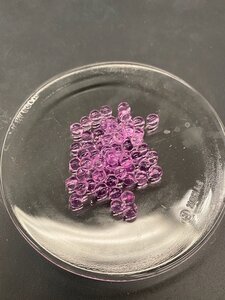
Ground water contamination is a widespread issue in the United States. Volatile organic compounds (VOC) are a concern as over 50% of more than 3500 groundwater samples collected from 98 major drinking water supply aquifers from 1985-2001 contained at least one VOC. Additionally, co-contaminants such as 1,4-dioxane (1,4-D) are of increasing concern as they are likely carcinogenic. This project focuses on developing hydrogel beads for encapsulating alkane-oxidizing bacterium Rhodococcus rhodochrous ATCC 21198 to remove contaminants through aerobic co-metabolism from groundwater aquifers. We explored different polymer combinations to produce hydrogel beads that display mechanical integrity for extended periods of time. Polymers explored include polyvinyl alcohol, sodium alginate, low-acyl gellan gum, and chitosan as well as different combinations of each. In tandem, different crosslinking agents were tested to see how well they worked with the polymer solutions. Specifically, we varied the concentrations of the polymer and crosslinkers to evaluate the resultant durability of the hydrogel beads. Regarding future work, we want to focus on providing a sustainable environment for the microorganisms that can be mass produced. Isobutane uptake will be used to measure sustainability of the bead environment, and degradation will be tested using a pilot scale reactor to emulate a groundwater aquifer. Finally, we plan to mass produce hyrdrogel beads using a co-axial capillary extrusion gel bead generator available in our lab.
| Attachment | Size |
|---|---|
| 517.01 KB |

